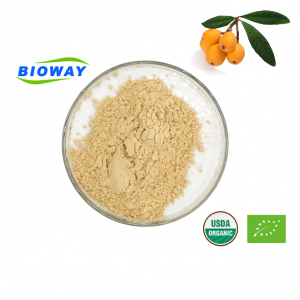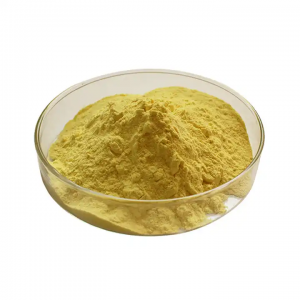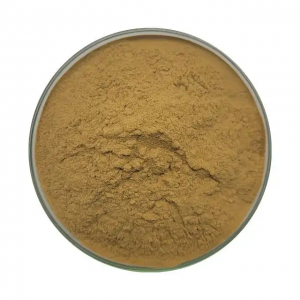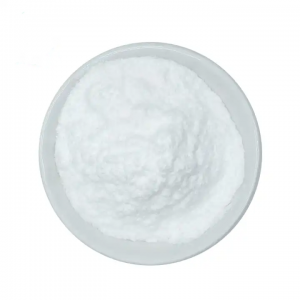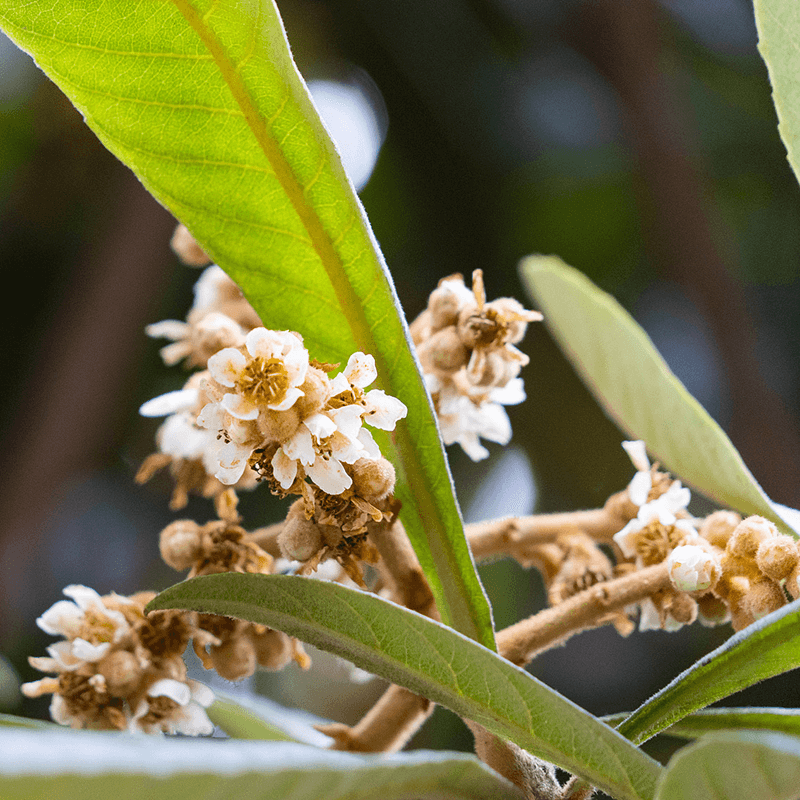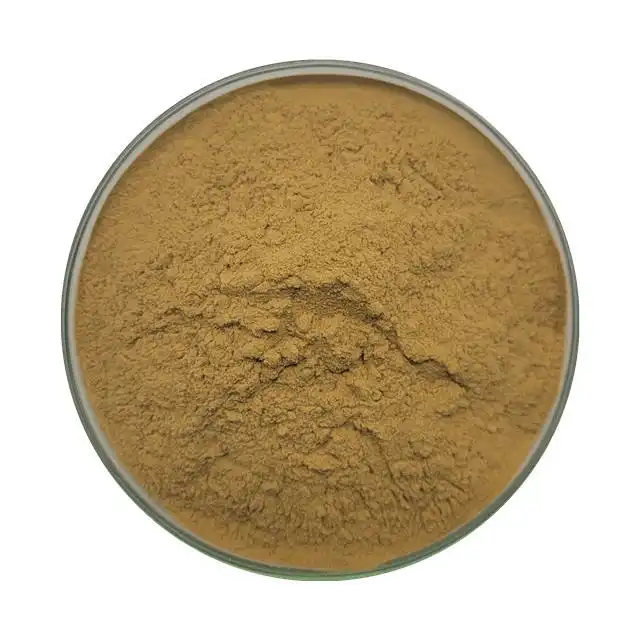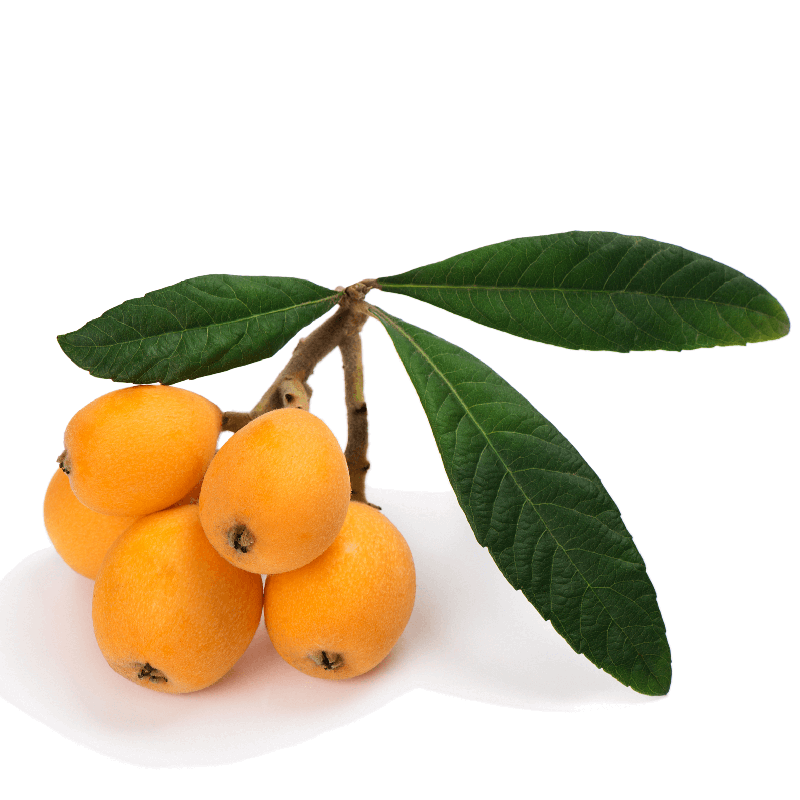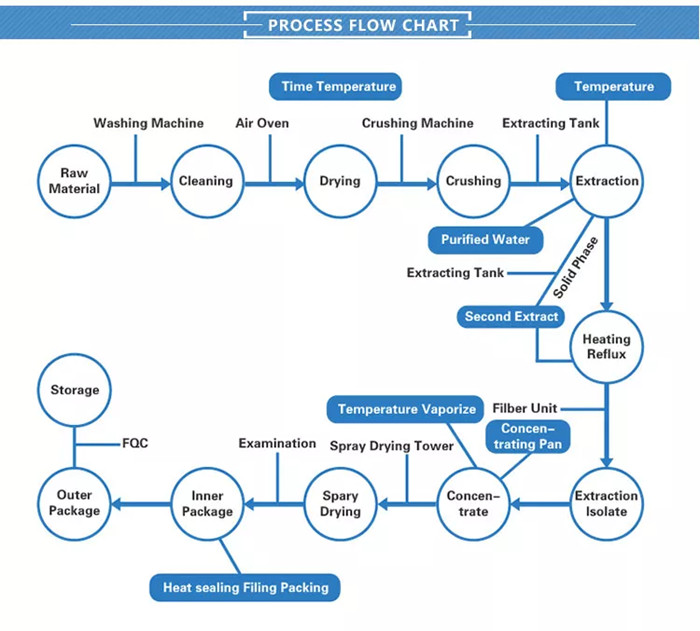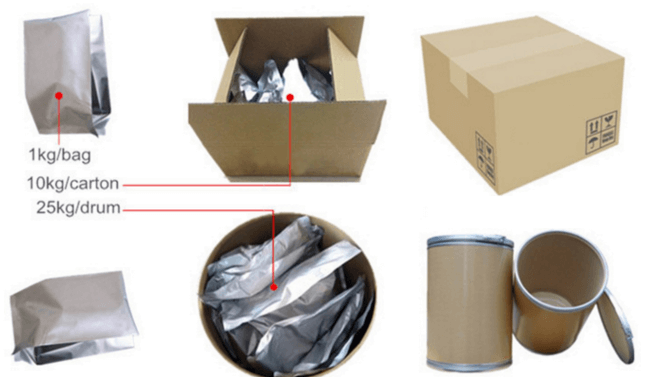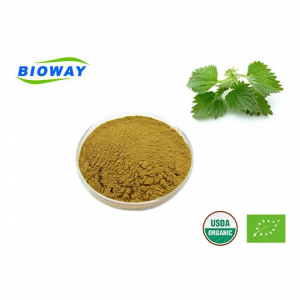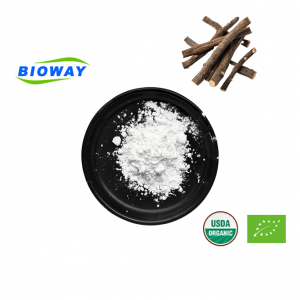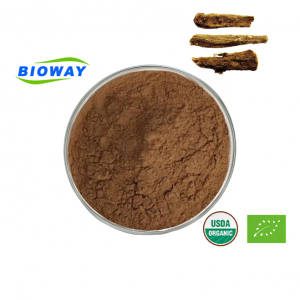Loquat Leaf Extract
Loquat leaf extract is a natural substance derived from the leaves of the loquat tree (Eriobotrya japonica). The loquat tree is native to China and is now cultivated in various countries around the world. The leaves of the tree contain various bioactive compounds that contribute to its medicinal properties. The main active ingredients in loquat leaf extract include triterpenoids, flavonoids, phenolic compounds, and various other bioactive compounds. These include ursolic acid, maslinic acid, corosolic acid, tormentic acid, and betulinic acid.Loquat leaf extract has been used in traditional medicine for centuries and is believed to possess several health benefits.
|
ANALYSIS
|
SPECIFICATION
|
RESULTS
|
|
Appearance
|
Light brown powder
|
Complies
|
|
Odor
|
Characteristic
|
Complies
|
|
Tasted
|
Characteristic
|
Complies
|
|
Assay
|
98%
|
Complies
|
|
Sieve Analysis
|
100% pass 80 mesh
|
Complies
|
|
Loss on Drying
|
5% Max.
|
1.02%
|
|
Sulfated Ash
|
5% Max.
|
1.3%
|
|
Extract Solvent
|
Ethanol & Water
|
Complies
|
|
Heavy Metal
|
5ppm Max
|
Complies
|
|
As
|
2ppm Max
|
Complies
|
|
Residual Solvents
|
0.05% Max.
|
Negative
|
|
Microbiology
|
|
|
|
Total Plate Count
|
1000/g Max
|
Complies
|
|
Yeast & Mold
|
100/g Max
|
Complies
|
|
E.Coli
|
Negative
|
Complies
|
|
Salmonella
|
Negative
|
Complies
|
(1) High-Quality Extraction: Ensure that the Loquat leaf extract is obtained through a high-quality and standardized extraction process to preserve the beneficial compounds.
(2) Purity: Offer a product with a high purity level to ensure maximum potency and effectiveness. This could be achieved through advanced filtration and purification techniques.
(3) Active Compound Concentration: Highlight the concentration of key active compounds, such as Ursolic Acid, which is known for its potential health benefits.
(4) Natural and Organic Sourcing: Emphasize the use of natural and organic Loquat leaves, preferably sourced from reputable suppliers or farms adhering to sustainable farming practices.
(5) Third-Party Testing: Conduct thorough third-party testing to confirm the quality, purity, and potency. This ensures transparency and confidence in the product.
(6) Multiple Applications: Highlight the diverse applications, such as dietary supplements, functional foods, beverages, or personal care products.
(7) Shelf Stability: Develop a formulation that ensures long shelf life and maintains the integrity of the active compounds, allowing for extended product usability.
(8) Standard Manufacturing Practices: Adhere to standard guidelines during the manufacturing process to ensure product safety, consistency, and quality control.
(9) Regulatory Compliance: Ensure the product complies with all relevant regulations, certifications, and quality standards in the target market.
(1) Antioxidant properties: It contains antioxidants that help protect cells from oxidative stress and reduce the risk of chronic diseases.
(2) Respiratory health support: It may help soothe and support respiratory health, providing relief from coughs, congestion, and other respiratory symptoms.
(3) Immune system boost: It may help enhance the immune system, making it more resistant to infections and promoting overall wellness.
(4) Anti-inflammatory effects: It has anti-inflammatory properties that may help reduce inflammation in the body and alleviate symptoms of inflammatory conditions.
(5) Digestive health support: It may promote healthy digestion by improving digestive function and reducing digestive discomfort.
(6) Skin health benefits: It can be beneficial for the skin, promoting a healthy complexion and helping to reduce the appearance of blemishes and skin irritations.
(7) Blood sugar management: It may help regulate blood sugar levels and improve insulin sensitivity, making it potentially beneficial for individuals with diabetes or prediabetes.
(8) Heart health support: Some studies suggest that it may have cardiovascular benefits, including promoting healthy blood pressure levels and cardiovascular function.
(9) Anti-cancer properties: Preliminary research suggests that certain compounds in it may have anti-cancer effects, although further studies are needed to validate these findings.
(10) Oral health benefits: It may contribute to oral health by preventing dental plaque formation, reducing the risk of cavities, and promoting healthy gums.
(1) Herbal medicine and nutraceuticals: It is used in natural remedies and dietary supplements for its potential health benefits.
(2) Traditional Chinese medicine: It has been used in traditional Chinese medicine for centuries to treat various ailments.
(3) Cosmetics and skincare: It is utilized in cosmetic products for its potential benefits in promoting healthy skin and reducing skin irritations.
(4) Food and beverage: It can be used as a natural flavoring or ingredient in food and beverage products.
(5) Pharmaceutical industry: It is studied for its potential therapeutic properties and may be included in the development of pharmaceutical drugs.
(6) Alternative health and wellness: It is gaining popularity as a natural remedy in the alternative health and wellness industry.
(7) Natural and herbal remedies: It is incorporated into natural remedies such as tinctures, teas, and herbal formulations for various health conditions.
(8) Functional food industry: It can be incorporated into functional foods and beverages to enhance their nutritional profile and potential health benefits.
(9) Respiratory health supplements: They can be used in the production of supplements targeting respiratory conditions.
(10) Herbal teas and infusions: It is used to create herbal teas and infusions known for their potential health-promoting properties.
(1) Harvest mature loquat leaves from healthy trees.
(2) Sort and wash the leaves to remove dirt and impurities.
(3) Dry the leaves using a method such as air drying or low-temperature drying to preserve their active compounds.
(4) Once dried, grind the leaves into a fine powder using a suitable grinding machine.
(5) Transfer the powdered leaves to an extraction vessel, such as a stainless steel tank.
(6) Add a solvent, such as ethanol or water, to extract the desired compounds from the powdered leaves.
(7) Allow the mixture to steep for a specified period, typically several hours to several days, to facilitate thorough extraction.
(8) Apply heat or utilize an extraction method, such as maceration or percolation, to enhance the extraction process.
(9) After extraction, filter the liquid to remove any remaining solids or impurities.
(10) Concentrate the extracted liquid by evaporating the solvent using methods like vacuum distillation.
(11) Once concentrated, further purify the extract through processes like filtration or chromatography, if necessary.
(12) Optionally, enhance the extract's stability and shelf life by adding preservatives or antioxidants.
(13) Test the final extract for quality, potency, and safety through analytical methods such as high-performance liquid chromatography (HPLC) or mass spectrometry.
(14) Package the extract in suitable containers, ensuring proper labeling and compliance with relevant labeling regulations.
(15) Store the packaged extract in a cool, dry place away from direct sunlight to maintain its quality.
(16) Document and track the production process, ensuring adherence to proper manufacturing practices and quality control protocols.
Express
Under 100kg, 3-5Days
Door to door service easy to pick up the goods
By Sea
Over300kg, Around 30 Days
Port to port service professional clearance broker needed
By Air
100kg-1000kg, 5-7Days
Airport to airport service professional clearance broker needed

Loquat Leaf Extract is certified with the ISO certificate, HALAL certificate, KOSHER certificate, BRC, NON-GMO, and USDA ORGANIC certificate.



